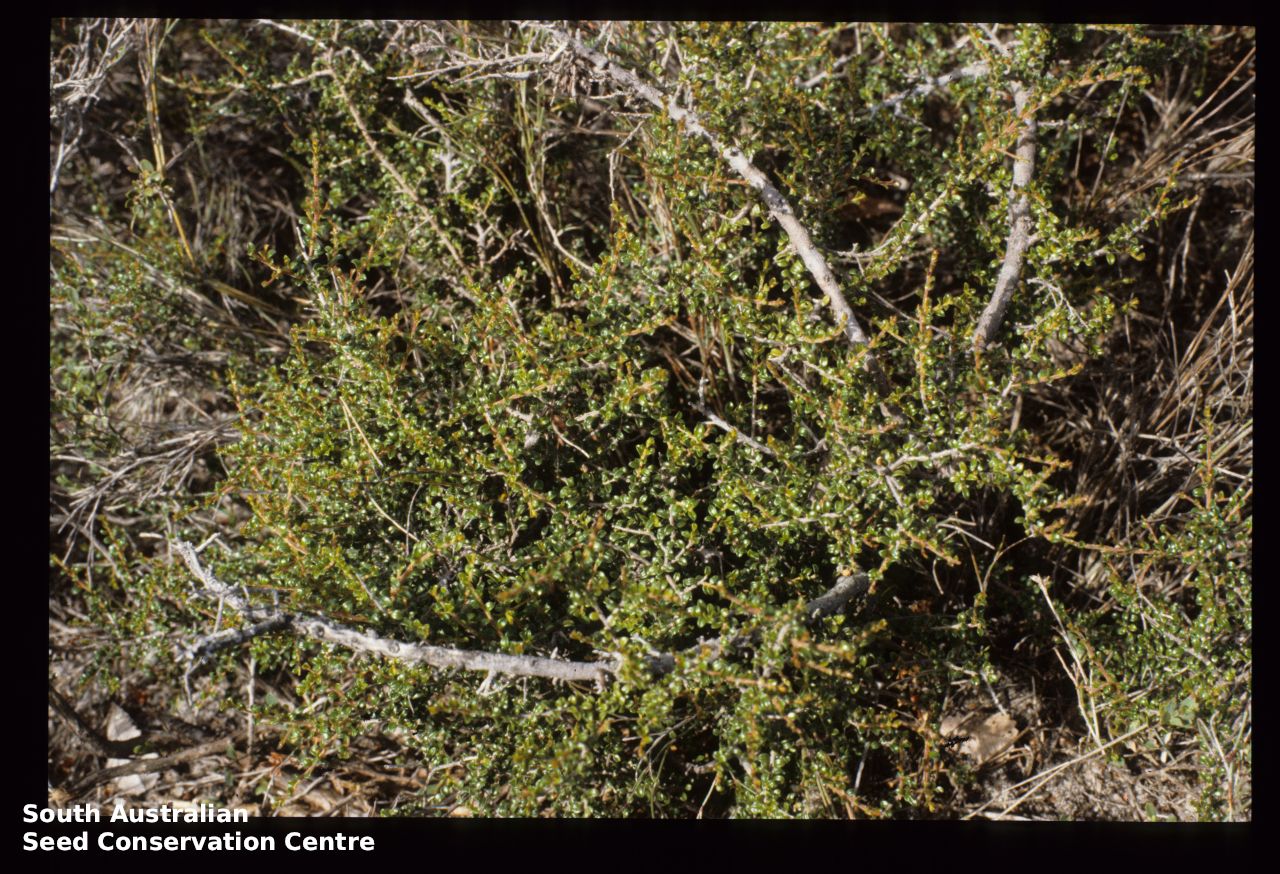
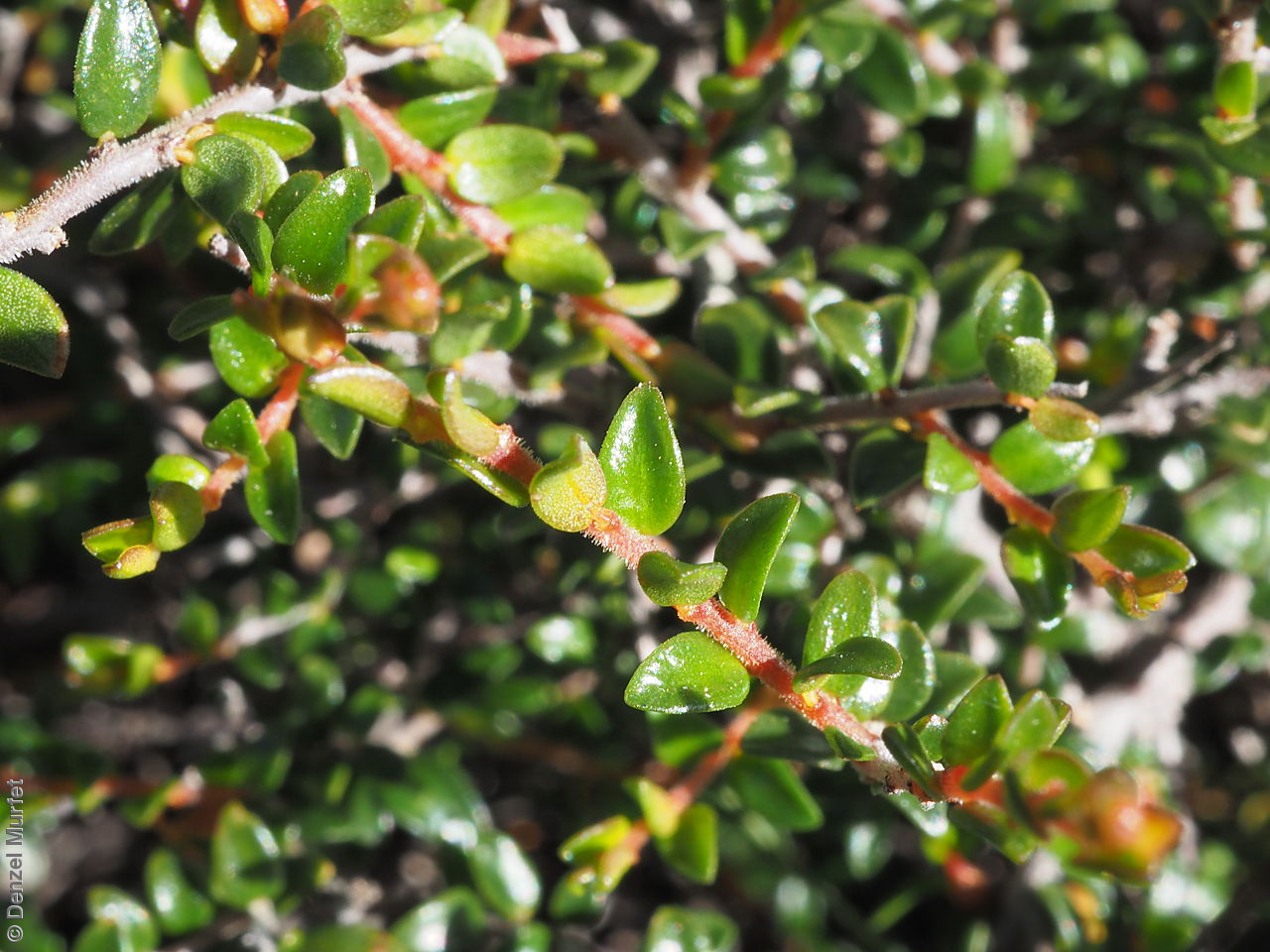
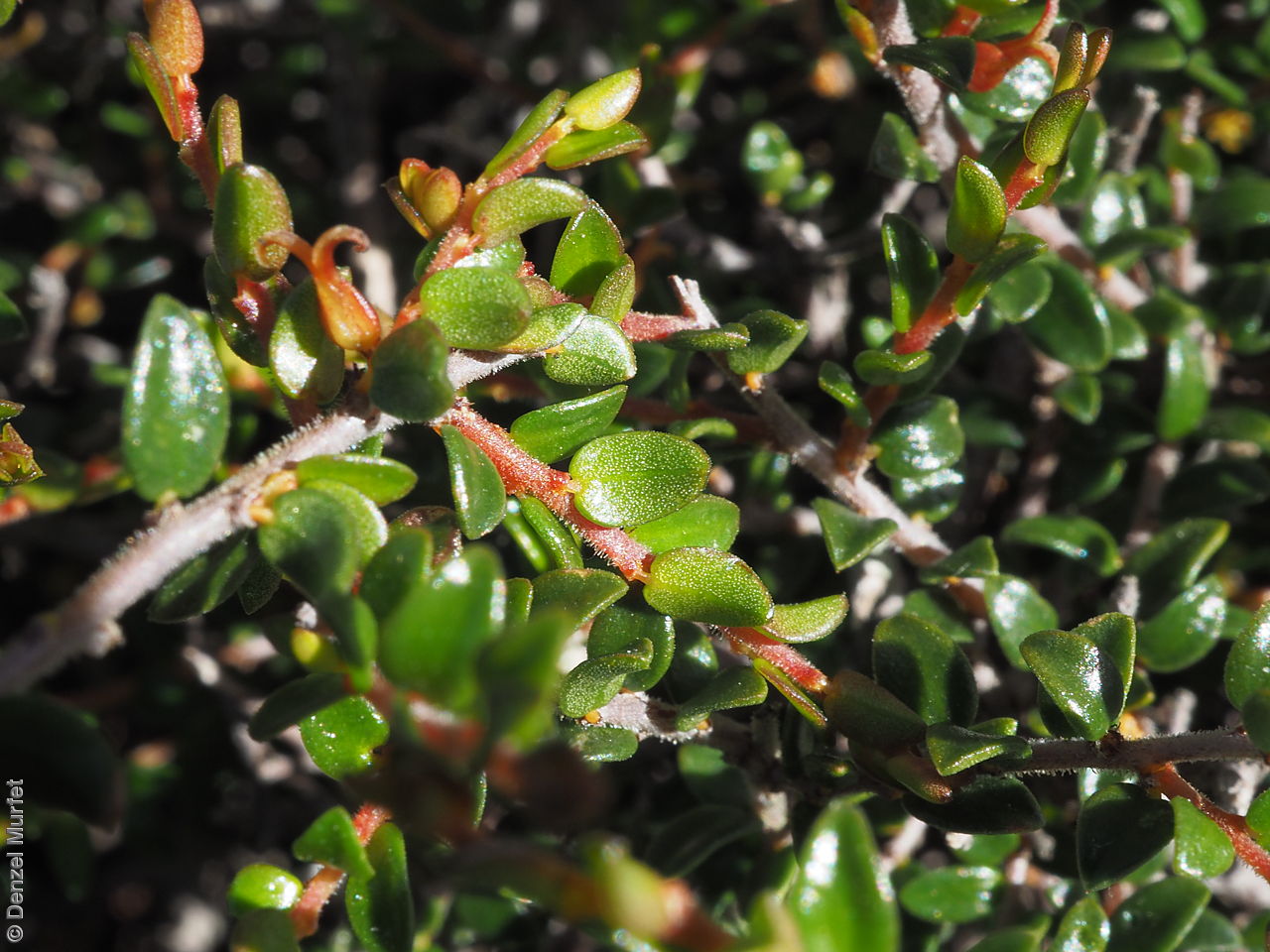
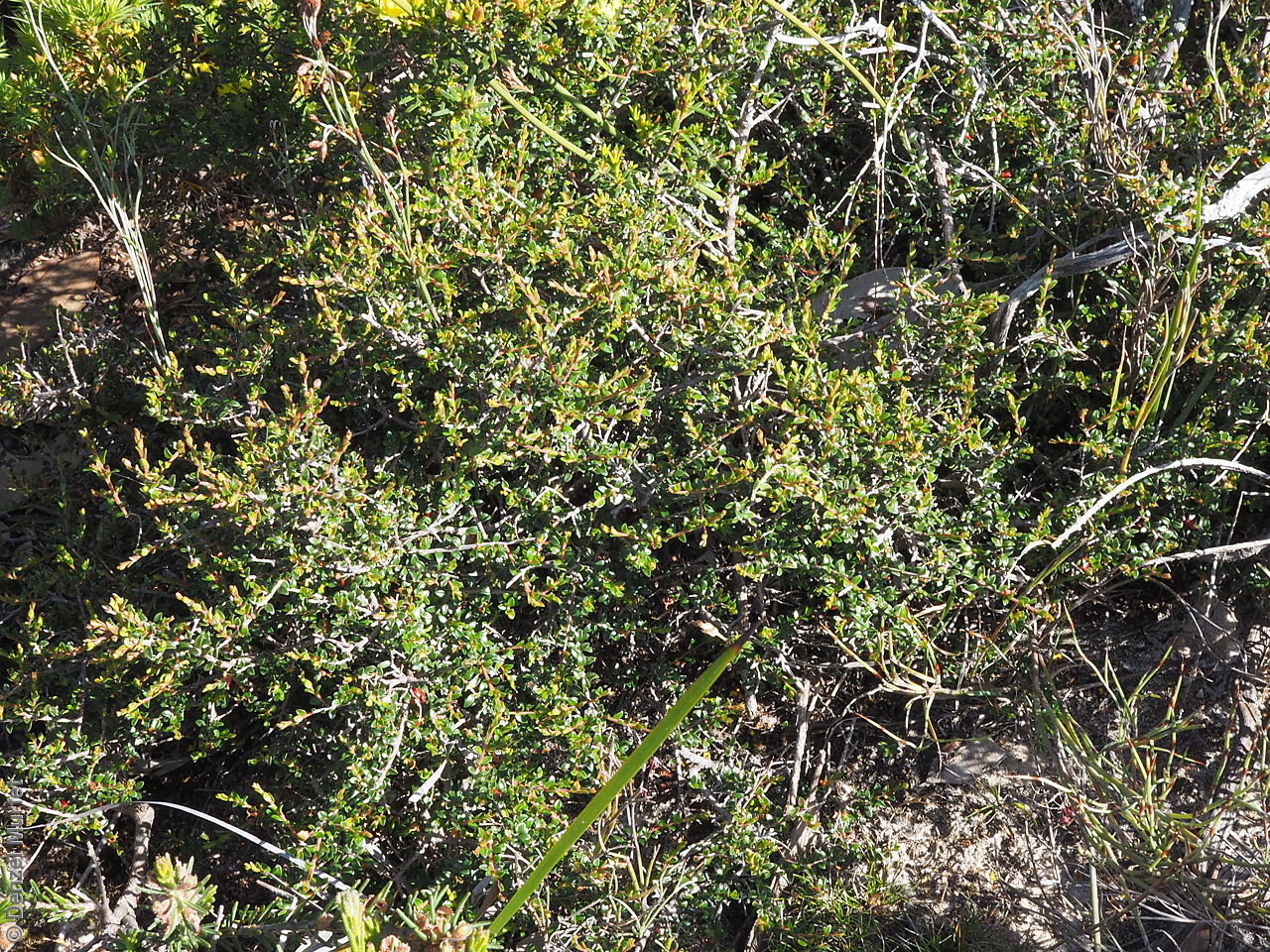
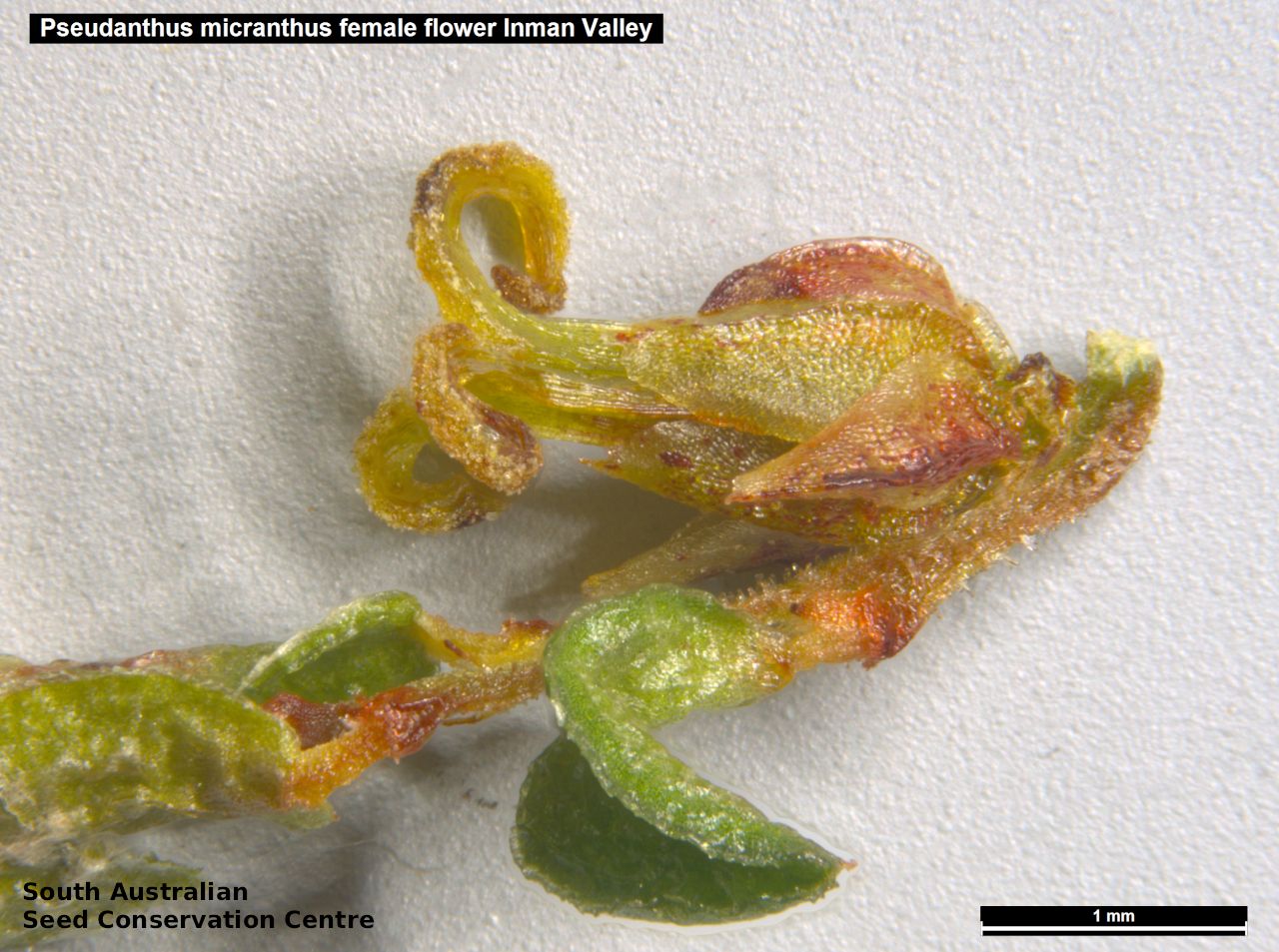
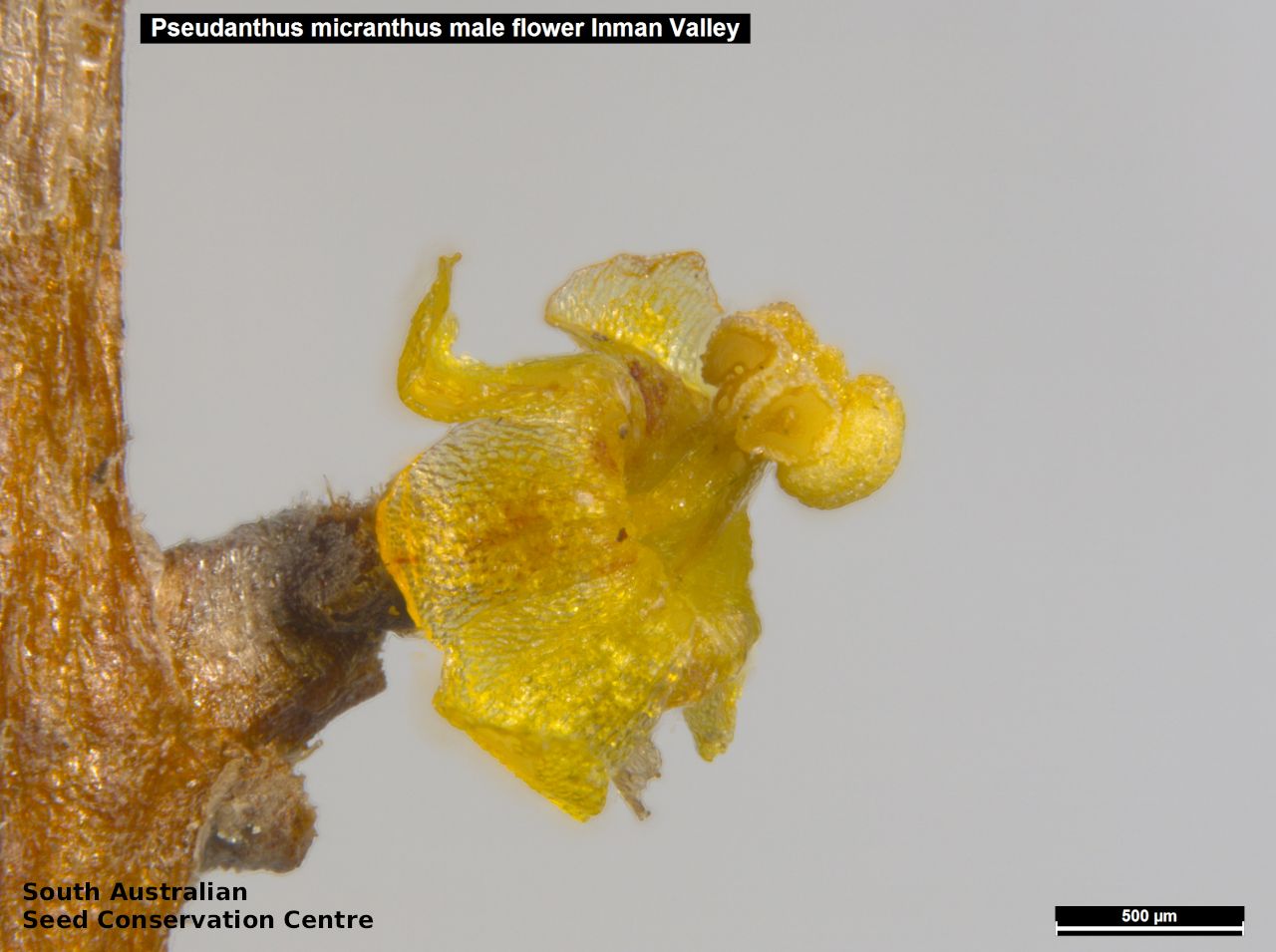
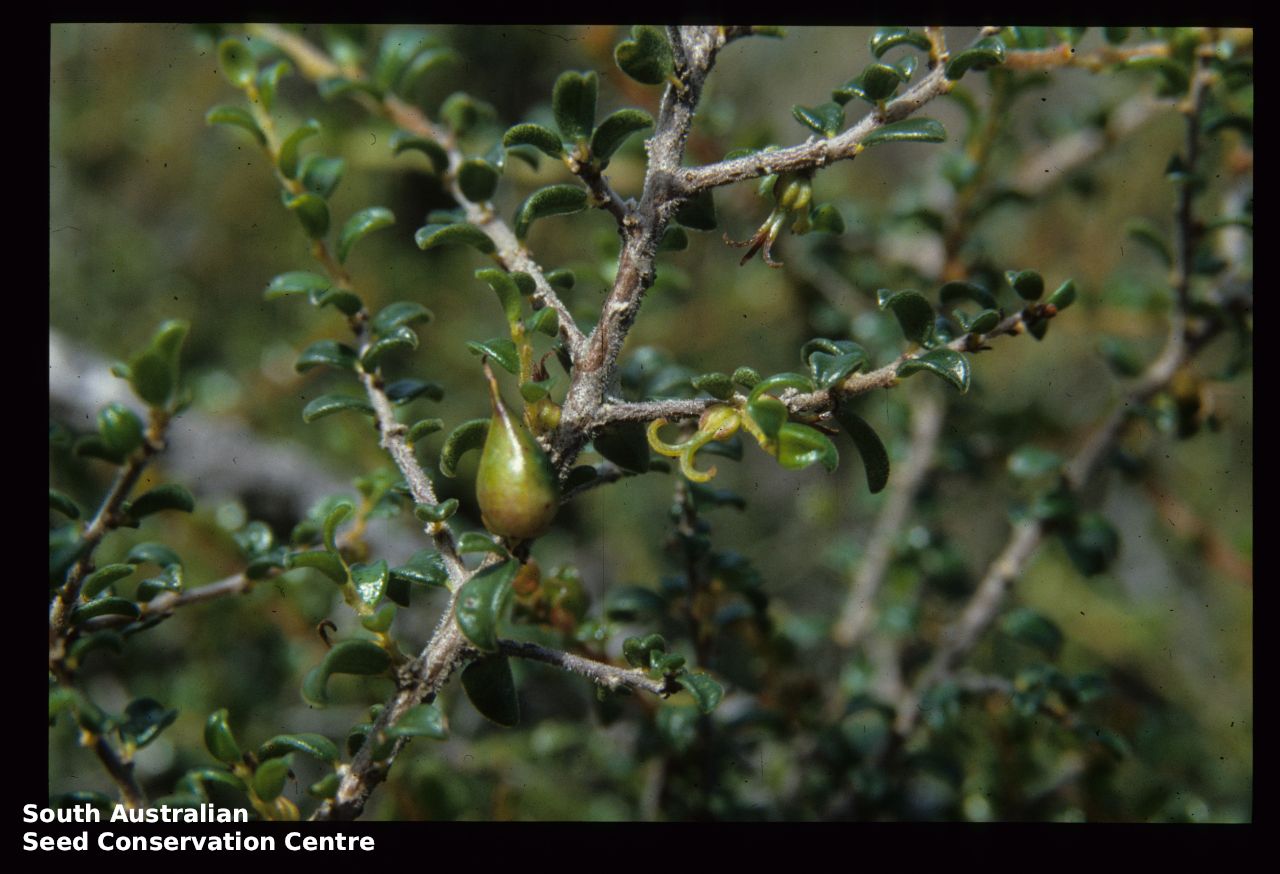
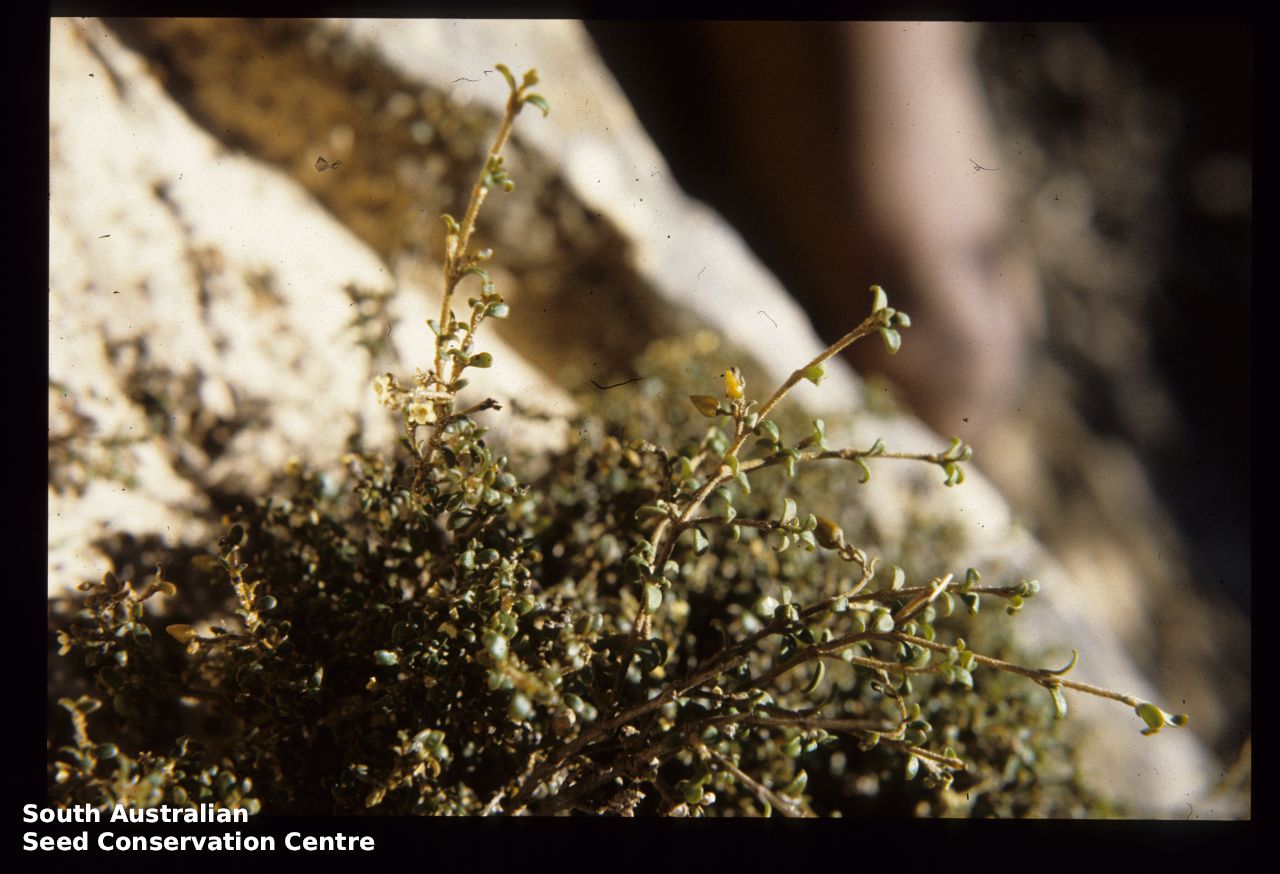
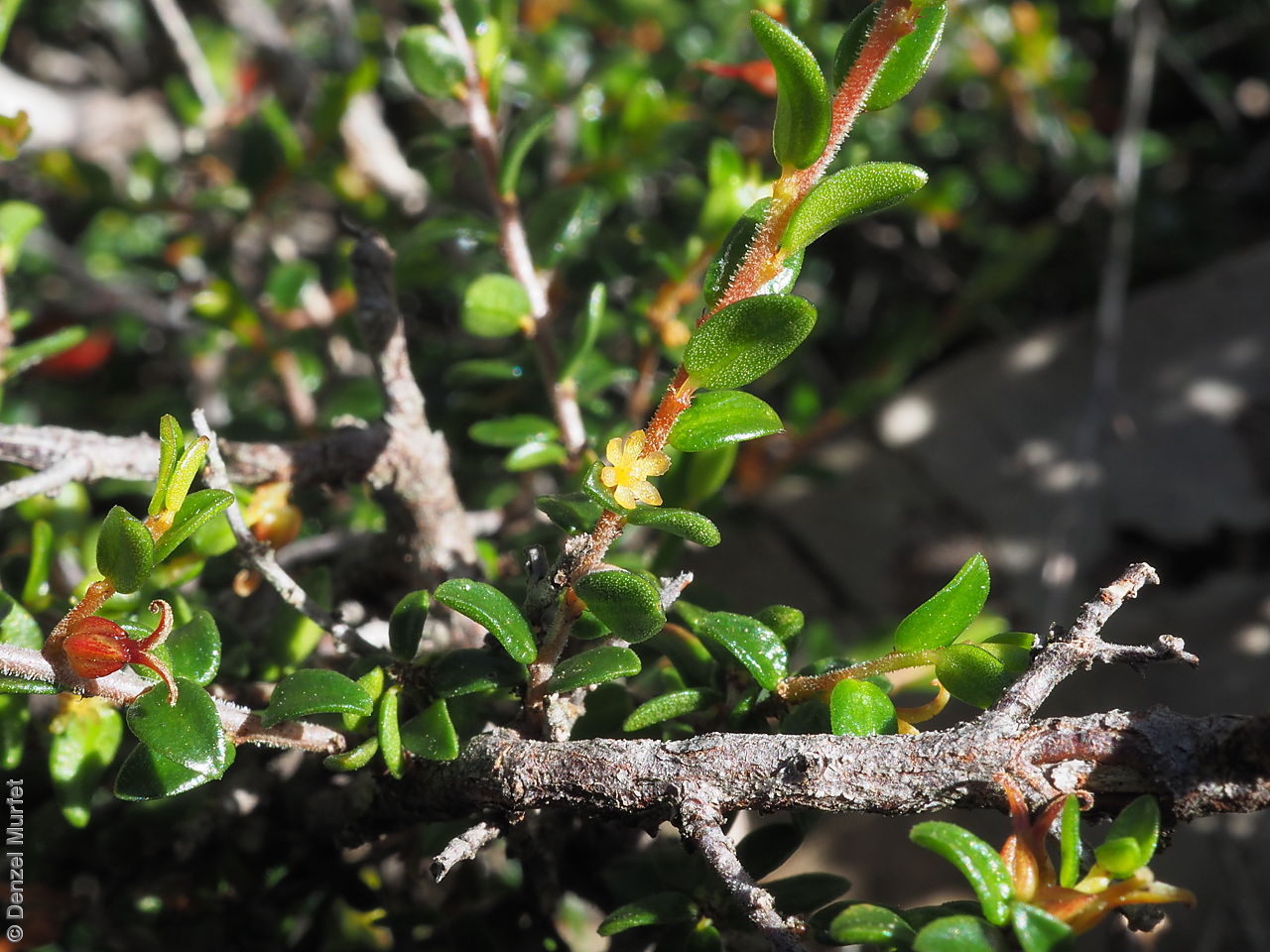
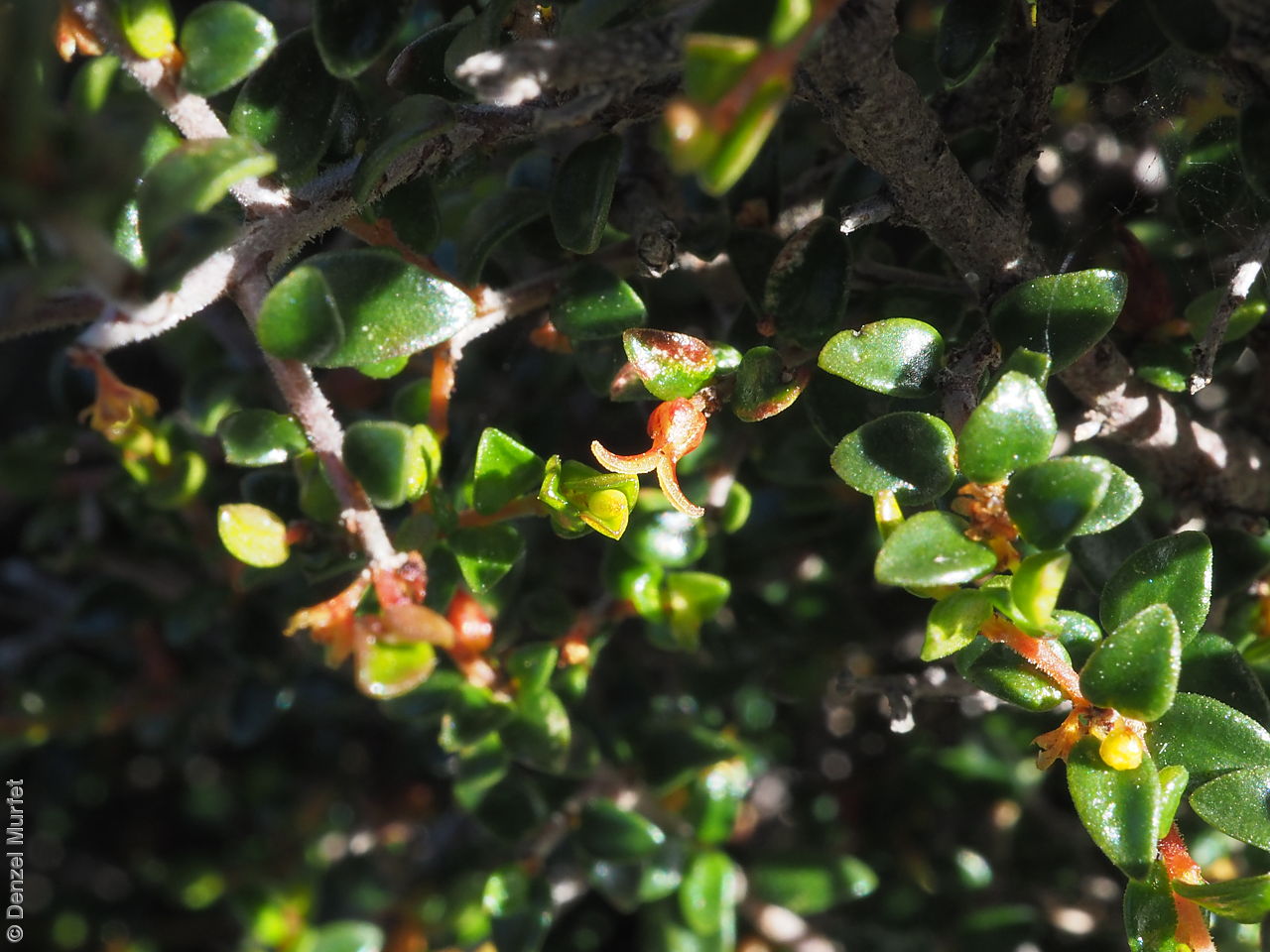
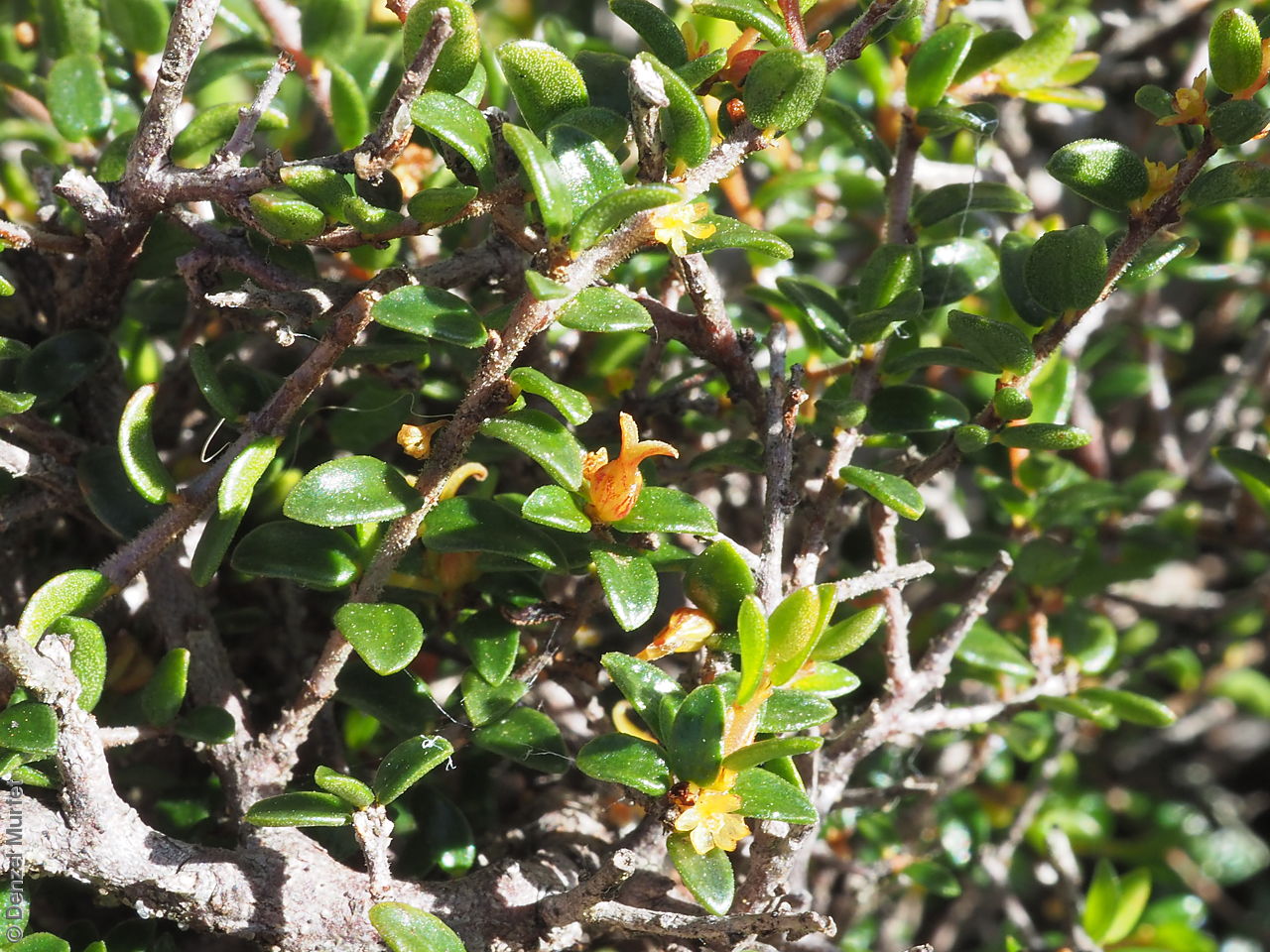
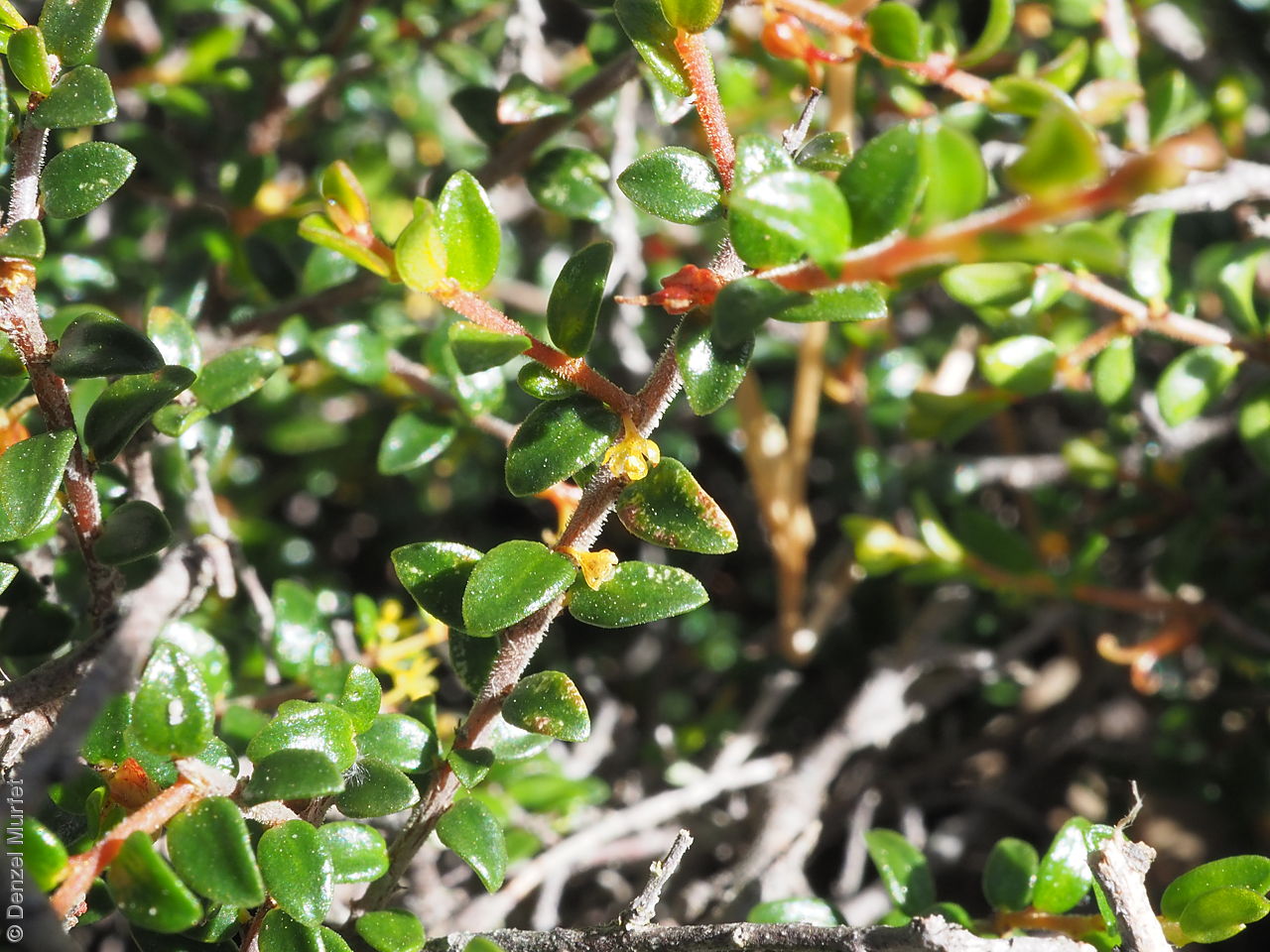

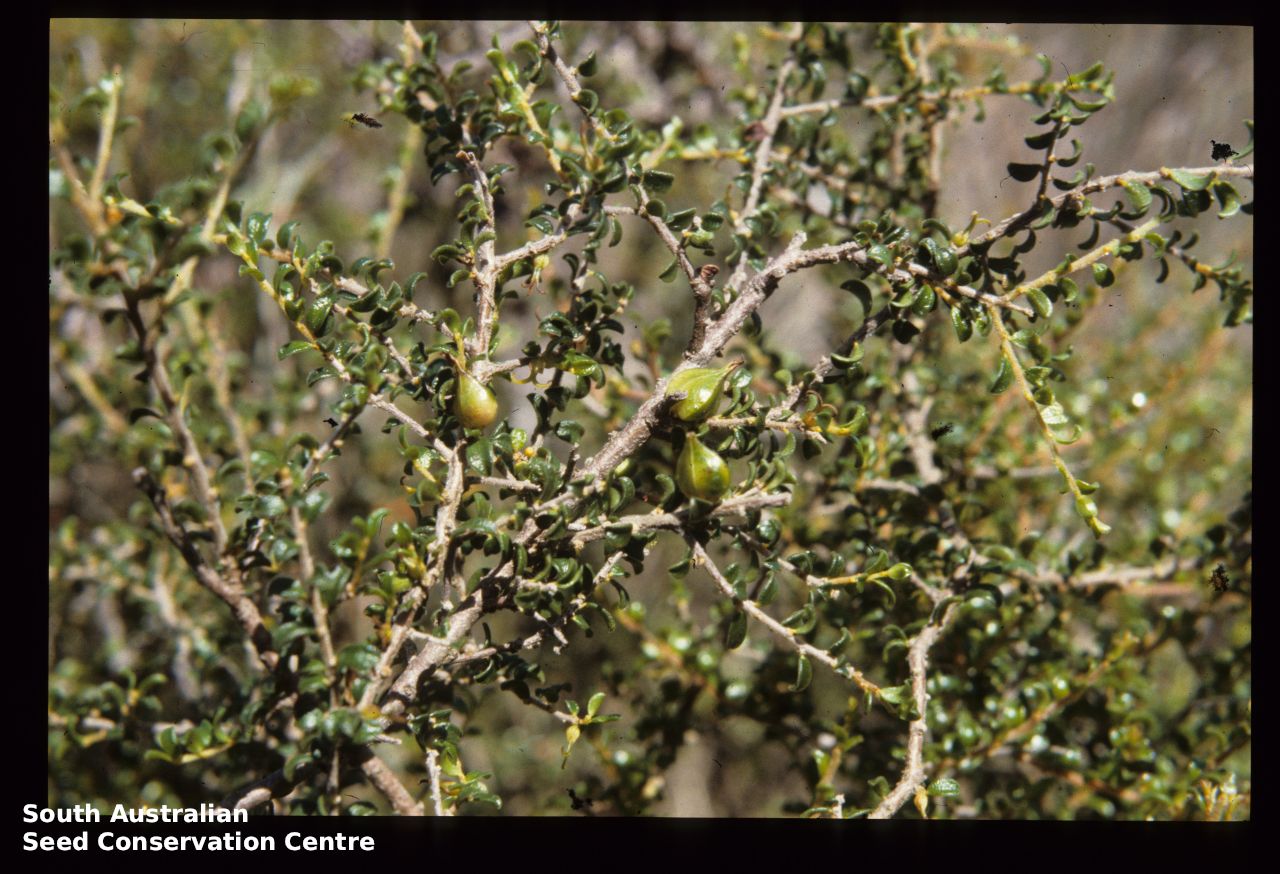
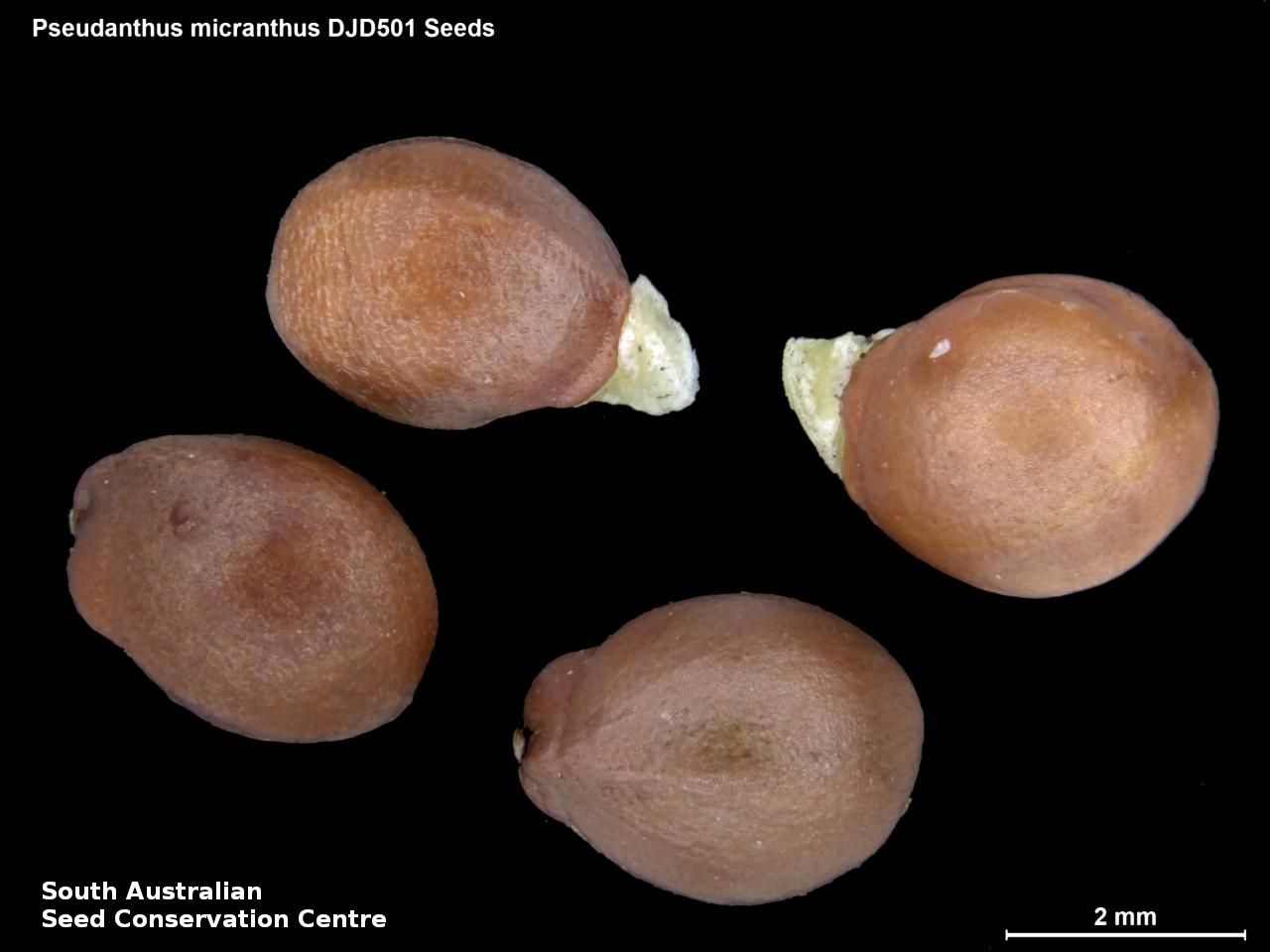

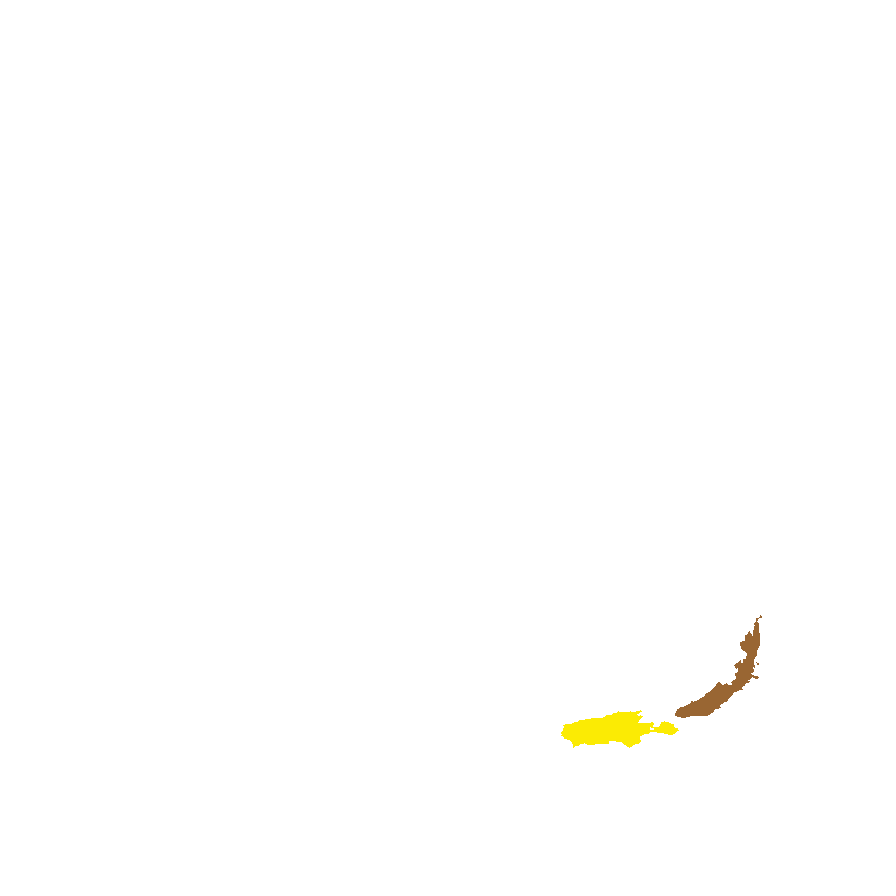
Botanical art
Prior names
Micrantheum tatei
Phyllanthus tatei
Etymology
Pseudanthus from the Greek 'pseudes' meaning false and 'anthos' meaning a flower; referring to the tyre species Pseudanthus pimeleoides, which has small flowers clustered at the summit of the branchlets resembling one showy flower. Micranthus from the Greek 'micros' meaning small and 'anthos' meaning flower; alluding to the species tiny flowers.
Distribution and status
Endemic to South Australia and found on Kangaroo Island and the Fleurieu Peninsula, growing in woodlands or heathlands. Native. Rare in South Australia.
Herbarium regions: Southern Lofty, Kangaroo Island
NRM regions: Adelaide and Mount Lofty Ranges, Kangaroo Island
AVH map: SA distribution map (external link)
Plant description
Dwarf shrubs to 20 cm high with a woody tap root, reddish stems covered in minutely short stiff thick hairs. Leaves alternate, glabrous, orbicular or ovate, to 6 mm long and 2.5 mm wide. Inflorescence yellow with a reddish pink or reddish brown margin with male flowers in axils on terminal leafy shoots, several to many and female flowers solitary, scattered among males. Flowers throughout the year. Fruits are yellowish green becoming tinged red with age, ovoid capsule to 5.5 mm long with 1-cell and 1 seed, smooth or slightly rugose. Seeds are brown ovoid seed to 3 mm long and 2.5 mm wide, smooth, shiny. Seed embryo type is spatulate fully developed.
Seed collection and propagation
Collect seeds between January and December. Collect individual capsule by hand, those that are fat, red and contain dark, hard seed. Place the capsules in a tray and leave to dry for one to two weeks. Then gently rub the capsules with a rubber bung to dislodge the seeds. Use a sieves to separate the unwanted material. Store the seeds with a desiccant such as dried silica beads or dry rice, in an air tight container in a cool and dry place. Seed viability can be variable and seeds. From one collection, the seed viability was high, at 90%.
| Location | No. of seeds (weight grams) | Number of plants | Date collected | Collection number Collection location | Date stored | % Viability | Storage temperature |
|---|---|---|---|---|---|---|---|
| BGA MSB | 1,350 (10.89 g) 1,350 (10.89 g) | 50+ | 7-Nov-2006 | DJD501 Southern Lofty | 1-Aug-2007 | 90% | +5°C, -18°C |
Number of plants: This is the number of plants from which the seeds were collected.
Collection location: The Herbarium of South Australia's region name.
% Viability: Percentage of filled healthy seeds determined by a cut test or x-ray.